
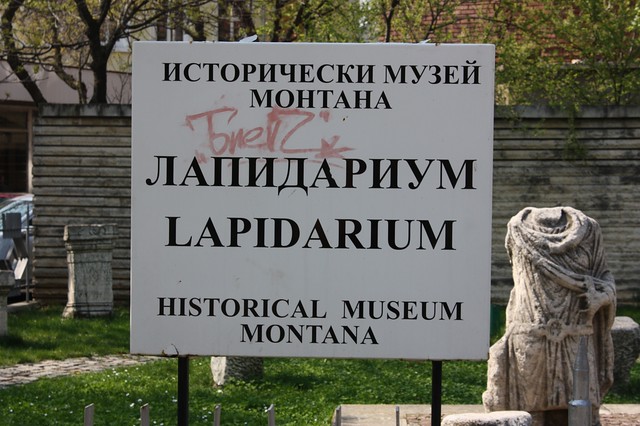
"Lapidarium" ονομάζεται το μέρος όπου εκτίθενται πέτρινα μνημεία και θραύσματα αρχαιολογικού ενδιαφέροντος, όπως επιτύμβιες στήλες, αγάλματα, κολώνες, αετώματα ή σαρκοφάγοι...
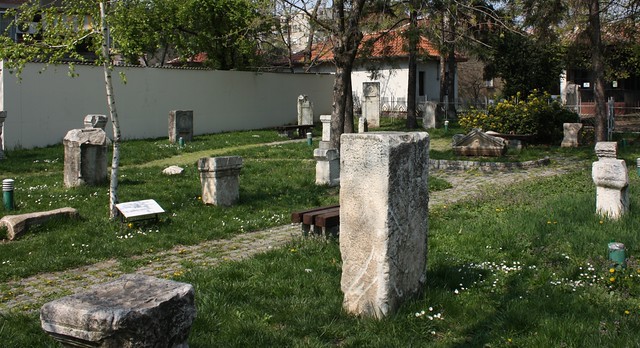
Η πρώτη φορά που είδα αυτόν τον όρο ήταν στην Βουλγαρική πόλη Монтана (Μοντάνα), τον αρχαίο Ρωμαϊκό δήμο Montanensium.
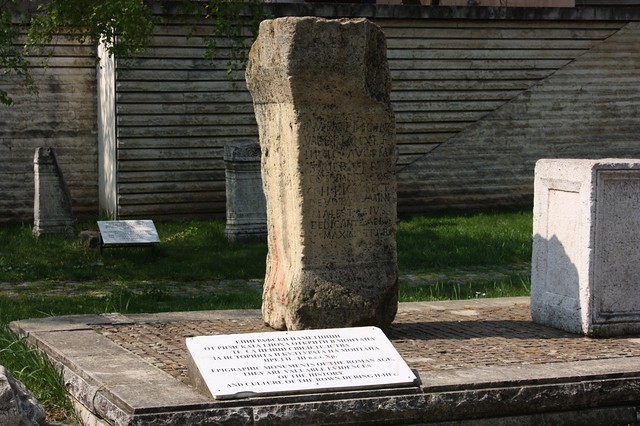
Στήλη με Ρωμαϊκή επιγραφή...
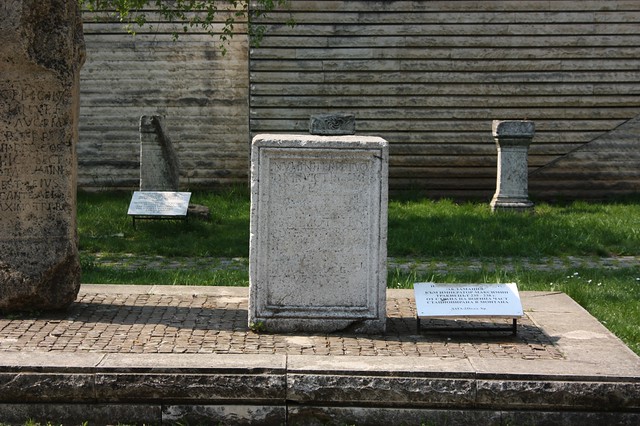
Επιγραφή της εποχής του Ρωμαίου Αυτοκράτορα Gaius Julius Verus Maximinus, γνωστού ως Maximinus Thrax (Μαξιμίνος Θραξ) ή Maximinus I. Ο Μαξιμίνος ήταν ο μοναδικός αυτοκράτορας που κυβέρνησε την Ρωμαϊκή Αυτοκρατορία χωρίς να πατήσει ποτέ το πόδι του στην Ρώμη... Είχε γεννηθεί στην Θράκη και είχε καταγωγή από την φυλή των Γετών...
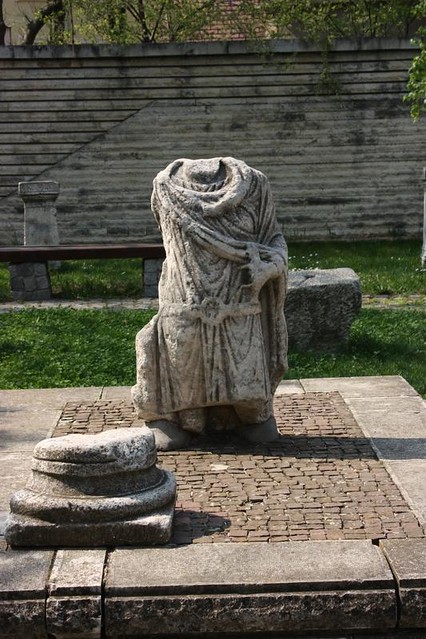
Τμήμα Ρωμαϊκού αγάλματος...
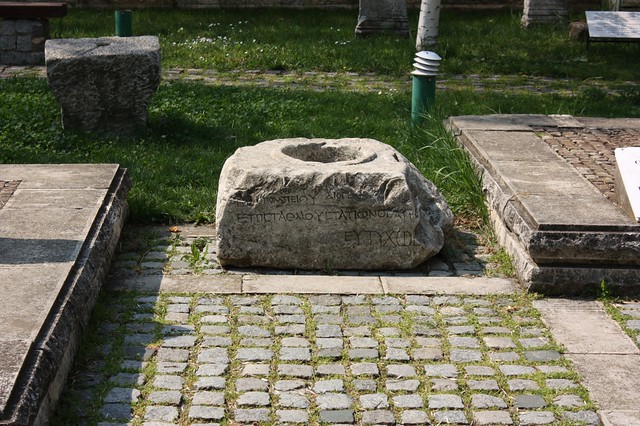
Βάση αγάλματος (;) με επιγραφή στα Ελληνικά...

Επιτύμβια στήλη...
[ENG] A lapidarium is a place where stone monuments and fragments of archaeological interest are exhibited - stone epigraphs, statues, architectural details like columns, cornices and acroterions, as well as tombstones and sarcophagi [Source: Wikipedia]. The first time I saw this term was in the Bulgarian city Montana, the Roman municipality of Montanensium... Photos: [1] Sign at the Lapidarium of Montana, Bulgaria, [2] The Lapidarium of Montana, [3] Roman Stele, [4] Stele with Roman script from 235 A.D., the time of Roman Emperor Gaius Julius Verus Maximinus, commonly known as Maximinus Thrax or Maximinus I. Maximinus was the first emperor to never set foot in Rome. He was born in Thrace, most probably by a Getae father and an Alanic mother, an Iranian people of the Scythian-Sarmatian branch, [5] Remains of a Roman statue, [6] Statue base with a Greek script, [7] Stele.

Η πρώτη φορά που είδα αυτόν τον όρο ήταν στην Βουλγαρική πόλη Монтана (Μοντάνα), τον αρχαίο Ρωμαϊκό δήμο Montanensium.

Στήλη με Ρωμαϊκή επιγραφή...

Επιγραφή της εποχής του Ρωμαίου Αυτοκράτορα Gaius Julius Verus Maximinus, γνωστού ως Maximinus Thrax (Μαξιμίνος Θραξ) ή Maximinus I. Ο Μαξιμίνος ήταν ο μοναδικός αυτοκράτορας που κυβέρνησε την Ρωμαϊκή Αυτοκρατορία χωρίς να πατήσει ποτέ το πόδι του στην Ρώμη... Είχε γεννηθεί στην Θράκη και είχε καταγωγή από την φυλή των Γετών...

Τμήμα Ρωμαϊκού αγάλματος...

Βάση αγάλματος (;) με επιγραφή στα Ελληνικά...

Επιτύμβια στήλη...
[ENG] A lapidarium is a place where stone monuments and fragments of archaeological interest are exhibited - stone epigraphs, statues, architectural details like columns, cornices and acroterions, as well as tombstones and sarcophagi [Source: Wikipedia]. The first time I saw this term was in the Bulgarian city Montana, the Roman municipality of Montanensium... Photos: [1] Sign at the Lapidarium of Montana, Bulgaria, [2] The Lapidarium of Montana, [3] Roman Stele, [4] Stele with Roman script from 235 A.D., the time of Roman Emperor Gaius Julius Verus Maximinus, commonly known as Maximinus Thrax or Maximinus I. Maximinus was the first emperor to never set foot in Rome. He was born in Thrace, most probably by a Getae father and an Alanic mother, an Iranian people of the Scythian-Sarmatian branch, [5] Remains of a Roman statue, [6] Statue base with a Greek script, [7] Stele.








No comments:
Post a Comment